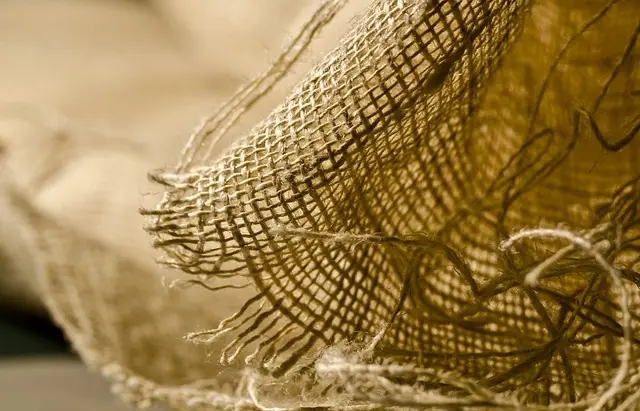Muscle soreness, known as delayed onset muscle soreness (DOMS), often occurs after intense or unaccustomed physical activity and can be managed with natural remedies like kratom, an herb traditionally used in Southeast Asia. Kratom contains alkaloids such as mitragynine and 7-hydroxymitragynine, which may provide analgesic effects by interacting with opioid receptors, potentially reducing muscle pain and inflammation associated with recovery. While user reports suggest specific strains like Maeng Da and Bali are effective for pain relief, it's crucial to use kratom with caution due to its potency and the need for further scientific investigation into its benefits and safe usage. The African dream herb, as kratom is colloquially known, should be approached responsibly, considering individual differences in strain effects and adhering to dosage guidelines. Users are advised to consult healthcare professionals to avoid side effects or unwanted interactions with other medications. The FDA has not endorsed kratom for medical use, and it's important to source it from reliable vendors to prevent contamination or adulteration. In summary, while kratom shows promise as a natural pain management option, its use should be carefully considered, prioritizing personal well-being and professional guidance to minimize health risks.
Muscle soreness, whether from intense exercise or daily physical activities, can be an impediment to maintaining an active lifestyle. Understanding the root causes of this discomfort is key to alleviating it effectively. This article delves into the natural potential of the African dream herb, commonly known as kratom, as a remedy for muscle soreness relief. We will explore its mechanisms, safe usage guidelines, and considerations to ensure optimal muscle recovery. Join us as we navigate the intersection of natural wellness and physical health through the lens of kratom’s healing properties.
- Understanding Muscle Soreness and Its Causes
- Exploring the Potential of African Dream Herb for Muscle Soreness Relief
- Safe Usage and Considerations When Using Kratom for Muscle Recovery
Understanding Muscle Soreness and Its Causes

Muscle soreness, commonly referred to as delayed onset muscle soreness (DOMS), is a condition characterized by pain and tenderness in the muscles that have been subjected to unaccustomed or strenuous activity. This phenomenon often occurs 24 to 72 hours post-exercise, with symptoms peaking after around two days. The exact mechanisms underlying muscle soreness are multifactorial and can include microtrauma to muscle fibers, inflammation, and metabolic byproducts accumulating within the muscles. Understanding the causes of muscle soreness is essential for individuals seeking relief, particularly those who may turn to natural remedies such as the African dream herb, kratom (Mitragyna speciosa).
Kratom has been traditionally used in certain Southeast Asian regions for its various medicinal properties. Among these are its potential analgesic effects, which have been attributed to its active alkaloids, mitragynine and 7-hydroxymitragynine. These compounds interact with the body’s opioid receptors, offering pain relief that may be beneficial for muscle soreness. The anti-inflammatory properties of kratom could also play a role in alleviating the discomfort associated with muscle recovery. Users often report that consuming kratom strains like Maeng Da or Bali can help manage pain levels, which might be particularly useful for those engaged in intense physical activity or suffering from chronic muscle soreness. However, it is crucial to approach the use of kratom with caution, as its effects can vary based on dosage and individual physiology, and more research is needed to fully understand its potential benefits and risks.
Exploring the Potential of African Dream Herb for Muscle Soreness Relief

Kratom, commonly known as the African dream herb, has garnered attention in various sectors due to its diverse range of effects on the human body. Traditionally used in Southeast Asian cultures for its stimulant properties, kratom also exhibits potential analgesic effects, which may aid in muscle soreness relief. The alkaloids present in kratom leaves, primarily mitragynine and 7-hydroxymitragynine, are thought to interact with opioid receptors in the brain, leading to pain relief. This interaction might be particularly beneficial for individuals experiencing muscle soreness, whether from physical exertion, injury, or chronic conditions like fibromyalgia.
Research into the efficacy of kratom for muscle soreness is ongoing, with preliminary studies suggesting its potential as a natural remedy. Users report that specific strains of kratom, such as the Maeng Da and Bali varieties, are particularly effective in alleviating pain and promoting a sense of well-being. It’s important to note the nuanced effects of different kratom strains, as they can vary significantly in their analgesic potency. As with any herbal remedy, it is crucial to approach its use with caution, adhering to recommended dosages and consulting healthcare professionals to avoid potential side effects or interactions with other medications. The African dream herb’s role in muscle soreness relief is an area of growing interest, with the potential for kratom to offer a safe and effective alternative for those seeking natural pain management solutions.
Safe Usage and Considerations When Using Kratom for Muscle Recovery

When incorporating kratom, commonly known as the African dream herb, for muscle recovery and soreness relief, it is imperative to approach its use with caution and informed awareness. Kratom interacts with the opioid receptors in the brain, providing pain relief and potentially aiding in muscle relaxation. However, its efficacy should be balanced with safe usage practices. The FDA has not approved kratom for any medical condition, and it carries the potential for side effects and risks, particularly when used in high doses or combined with other substances like opioids. To ensure safe usage, it is recommended to adhere to the following guidelines: begin with a lower dose to gauge individual sensitivity, avoid long-term use, and consult with a healthcare provider before integrating kratom into your muscle recovery regimen, especially if you have pre-existing health conditions or are taking other medications. Additionally, it is crucial to source kratom from reputable vendors to mitigate the risk of contamination or adulteration, which can exacerbate health issues. By understanding and following these considerations, individuals may explore the potential benefits of kratom as part of a holistic approach to managing muscle soreness while minimizing associated risks. Always prioritize your well-being and seek professional advice when considering the use of any new supplement like the African dream herb for health purposes.
Muscle soreness can be a significant hindrance to one’s physical activities, often stemming from intense exercise or physical strain. The African dream herb, commonly known as kratom, has garnered attention for its potential muscle soreness relief properties. This article delved into the science behind muscle soreness, explored the therapeutic possibilities of kratom, and discussed safe usage practices to harness its benefits for muscle recovery. While more research is needed to fully understand its effects, preliminary findings suggest that when used responsibly and as part of a holistic approach to health and wellness, kratom may offer significant relief for those experiencing muscle soreness. Users are encouraged to consult with healthcare professionals before incorporating kratom into their routine, ensuring it aligns with their overall health goals and any existing conditions or medications.






